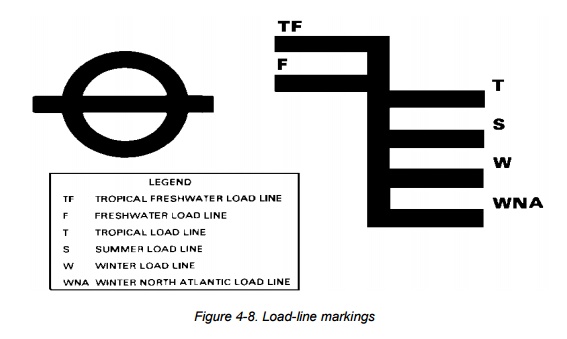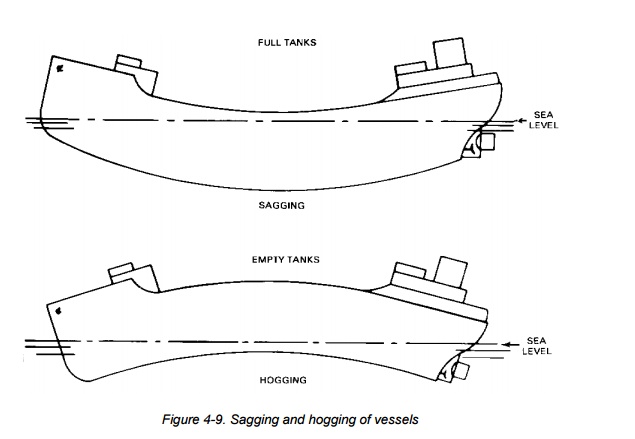Chapter: Civil : Railway Airport Harbour Engineering : Harbour Engineering
harbors: Loading and Unloading Operations
Loading
and Unloading Operations
RESPONSIBILITIES
Commanders of
commercial tank vessels and commanding officers of military tank vessels are
responsible for the loading plans for their vessels. Their decisions are final
concerning the cargo layout. Petroleum shore inspectors inspect all vessel
tanks and pipeline systems before loading. Their decisions on quality control
of product are final. The inspectors review the loading plans and consider
bulkheads, lines, tank capacities, and trim. In the case of split cargo, the
inspectors must ensure that the vessel is physically able to carry two or more
grades of products without contamination. The inspectors make sure that
bulkheads are secure and that there are double valves or line blanks to
separate and to protect each system. If valves are used they must be lashed and
sealed in the proper position and the seal numbers must be placed on the
shipping document. Shore operators must make sure that precautions are taken
against fire, product contamination, and safety hazards. All loading plans must
be coordinated between the ship's officer and the responsible shore authority.
Shore attendants should know loading terms and factors governing vessel loading
and unloading.
LOADING
INFORMATION
Below are the various types of data used to describe
the loading capacity of a vessel.
§
Gross Tonnage. Gross tonnage is the
total internal cubic capacity of a vessel less exempted spaces, such as tanks
for ballast water. This weight is expressed in units of 100 cubic feet per ton.
§
Net Tonnage. Net tonnage is the
registered tonnage of a ship after deductions have been made from the gross
tonnage. Examples of deductions are crew and navigation spaces.
§
Light Displacement. Light
displacement is the weight of the vessel. This does not include the weight of
cargo, passengers, fuel, water, stores, and other items that are needed on a
voyage.
§
Loaded Displacement. Loaded
displacement is the total weight of the vessel. This includes the weight of
cargo, passengers, fuel, water, stores, and other items that are needed on a
voyage.
§
Deadweight Tonnage. Deadweight
tonnage is the carrying capacity of a vessel in long tons. It is the difference
between light and loaded displacement.
§
Cargo Deadweight Tonnage. Cargo
deadweight tonnage is the number of long tons left after the weight of fuel,
water, stores, and other items needed on a voyage has been deducted from the
total deadweight of the vessel.
§
Barrel Capacity. Barrel capacity is
the volume of cargo expressed in US barrels. A US barrel equals 42 gallons.
§
Load Line. The load line is the
line that shows the maximum mean draft to which a vessel may be lawfully
submerged. It is the lower limit of the freeboard for different conditions and
seasons. Freeboard is the vertical distance amidships from the upper edge of
the deck line to the upper edge of the load line. Load lines, set by proper
authority, must be permanently and clearly marked on the vessel next to the
load lines (Figure 4-8). The disk must be amidships below the deck line. The
authority responsible for assigning load lines may be shown by letters, such as
A-B for American Bureau of Shipping, alongside the disk and above the
centerline. International load line certificates, issued by the Coast Guard,
certify that the load line is correct. The horizontal lines mark the maximum
load line for different conditions and different seasons.

Figure
4-8. Load-line markings
§
Draft. Draft is the depth of water
a vessel draws. Draft marks are painted on either side of the bow and stern of
a vessel. They show the depth to which the bow and stern are in the water. The
draft marks, along with the immersion scale, show how many tons of cargo are
required to immerse the vessel 1 inch at any draft according to the deadweight
scale on the vessel's plan.
§
Trim. Trim is the difference
between the bow draft and stern draft of a vessel. To trim a vessel is to
arrange the cargo weights to get the desired bow and stern drafts. Trim tables,
based on inch trim movement formulas, may be used to determine how weight
distribution affects the draft and trim of a loaded vessel. The number of tons
needed in any compartment to alter the trim of a vessel 1 inch can be found in
these tables.
§
Sag. A vessel sags when the middle
of its structure sinks below the bow and stern (Figure 4-9). A loaded tank
vessel tends to sag due to the weight of the cargo in the tank section. It is
most noticeable midship. Sagging may cause excess stress if the weight is
concentrated in the midship cargo tank section. Since sag reduces freeboard,
the amount of cargo that can be carried is reduced. Sagging can be reduced if
more weight is put in the end tanks and less weight is put in the center tanks.
Weight should not be concentrated in any one section even while tanks are being
loaded.
§
Hog. A vessel hogs when the bow and
stern are lower than the midship section (Figure 4-9). An empty vessel tends to
hog because the bow and stern sections weigh more than the midship. Hogging
causes the center of the vessel to carry most of the stress. Hogging can be
avoided with proper loading and ballasting. Tables supplied with each vessel
can be used to determine bow-to-stern stress while the vessel is being loaded
and ballasted.

Figure 4-9. Sagging and hogging of vessels
Related Topics